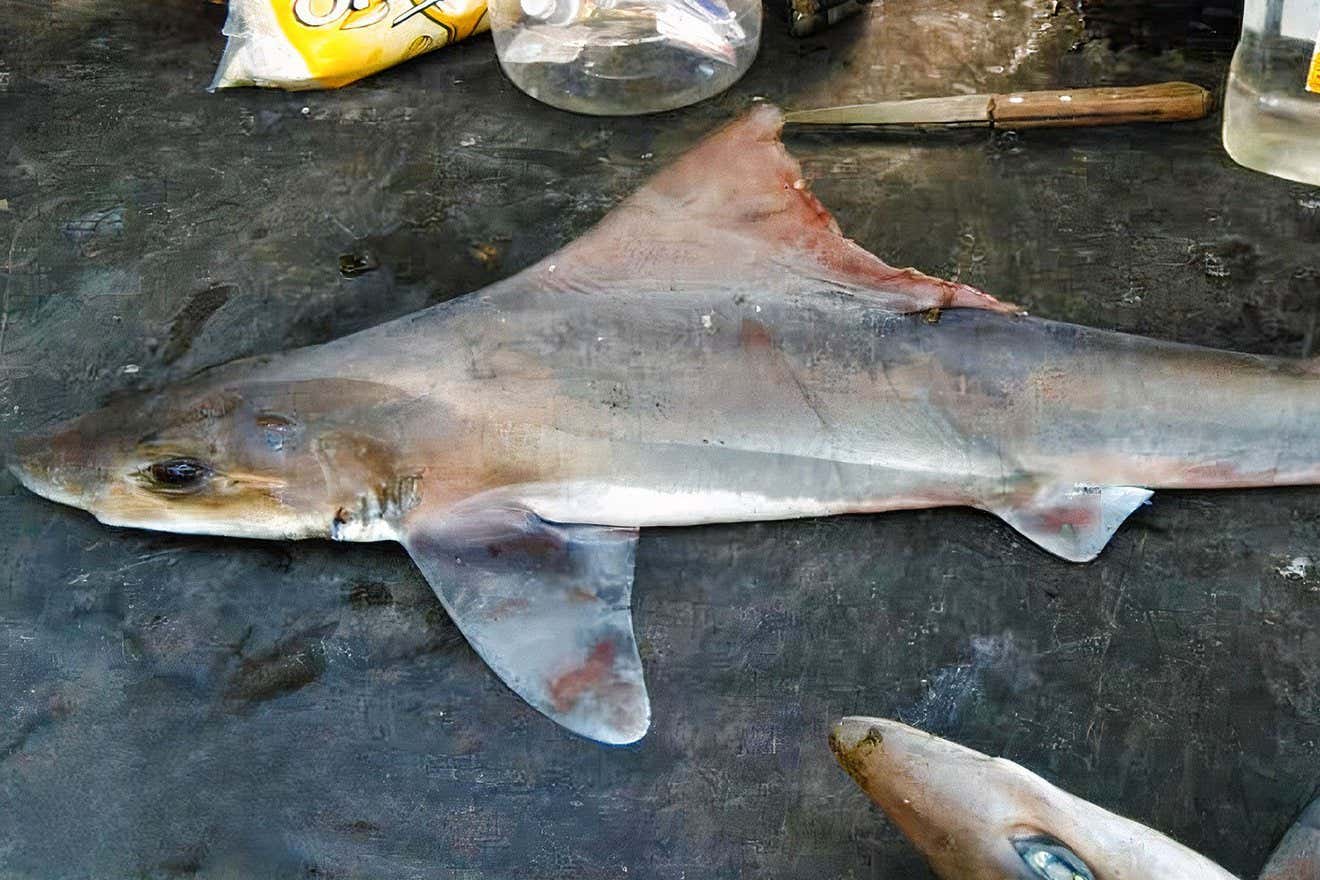Now Reading: Sailback Shark Rediscovered After 50-Year Gap
-
01
Sailback Shark Rediscovered After 50-Year Gap
Sailback Shark Rediscovered After 50-Year Gap

Quick Summary
- The rare sailback houndshark (Gogolia filewoodi), known for its unusually large dorsal fin, has been rediscovered in Papua New Guinea after more than 50 years.
- First described in 1973 near the Gogol River in Astrolabe bay, only a single specimen-a pregnant female-had been recorded until now.
- In March 2020, researchers collecting fisheries data from local communities identified five female sharks under a metre long with distinct dorsal fins. A male specimen was found in 2022.
- Scientists confirmed these as sailback houndsharks through collaboration with fishery experts and institutions like CSIRO (Australia).
- Reports suggest the sharks prefer deeper brackish waters near the mouth of the Gogol River and may be “microendemic,” restricted to a small region of Astrolabe Bay.
- Researchers plan DNA analysis for creating genetic baselines that will support future monitoring and protection strategies.
!campaign=RSS%7CNSNS&utmsource=NSNS&utmmedium=RSS&utm_content=home”>Read More
Indian Opinion Analysis
The rediscovery of the elusive sailback houndshark underscores global efforts to document biodiversity amid rising environmental challenges. While this event occurred outside India, it carries critical lessons for conservationists here given India’s rich aquatic ecosystems and increasing threats to marine life due to overfishing, habitat degradation, and climate change. Identifying “microendemic” species akin to those described here can catalyze better localized preservation policies.
India shares similar ecological terrains across coastal regions that often host unique yet understudied species. Collaborative approaches like those seen between Pacific-based researchers could inspire more robust frameworks within India’s National Biodiversity Action Plan. Ensuring thorough research paired with genetic mapping is crucial not only for protecting individual species but also for evaluating broader ecosystem health that supports lasting livelihoods linked to fisher communities.
Further discovery such as this illustrates both scientific persistence and community partnerships necessary for advancing biological studies while preserving fragile habitats-a practice relevant globally but fittingly actionable across Indian waters.























